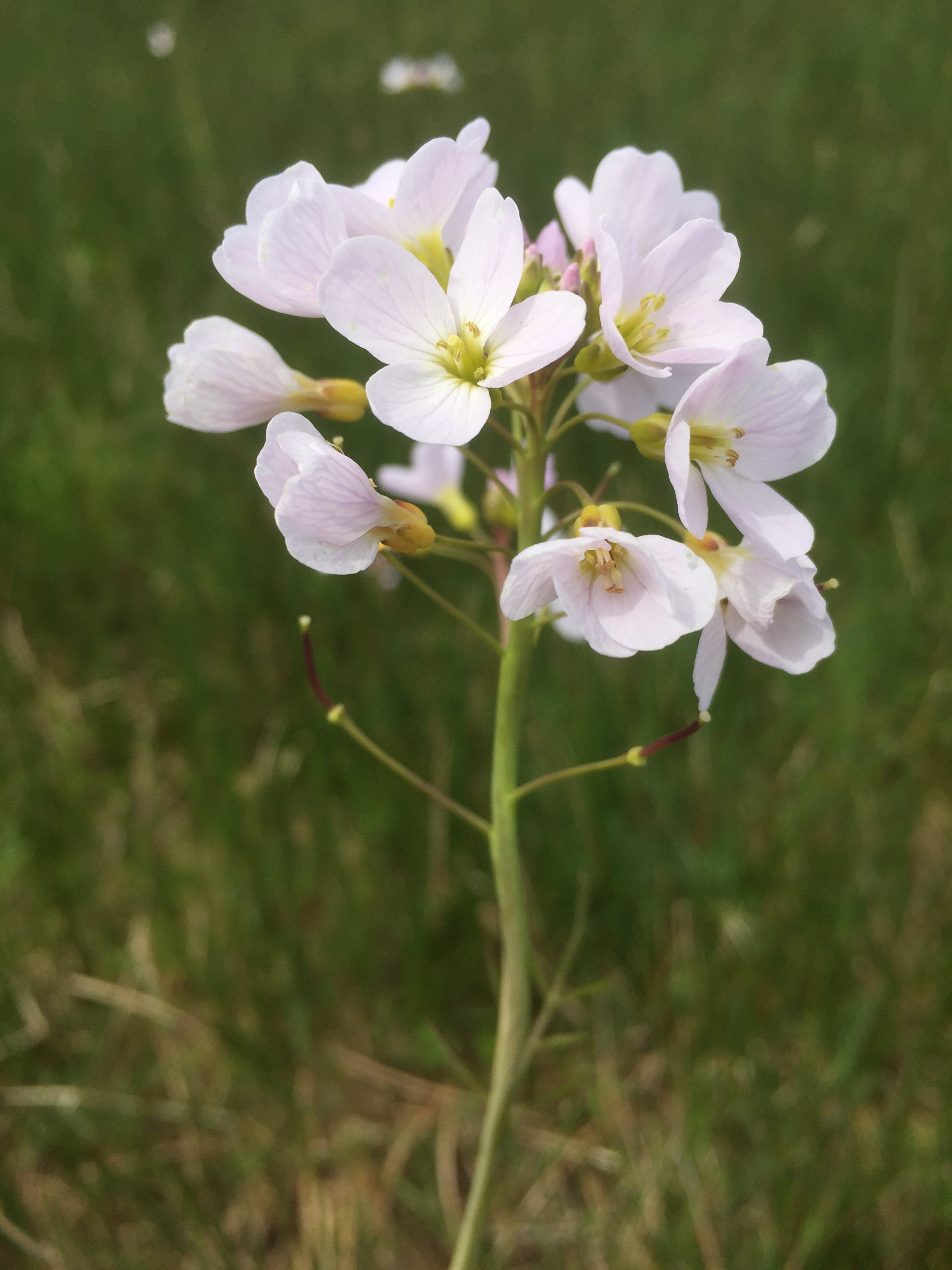
Otherwise known as Lady’s Smock this is one of our most attractive spring flowers, brightening up damp pastures and roadside verges across the country with its subtle pink flower-heads. It usually starts to appear around mid-April, about the same time as the first Cuckoos arrive back from Africa – hence the name.
It also appears at the same time as Orange Tips are emerging, which is just as well as it is one of the main foodplants for this butterfly’s caterpillars. The ‘orange-tips’ of the male butterfly warn of its distastefulness, and this is derived from the spicy mustard oils within the Cuckoo Flower (and some of its close relatives). Spring butterflies also take advantage of the nectar.
In the best areas, Cuckoo Flowers can produce an impressive display, forming a pale, shimmering haze across the fields as thousands of unsynchronised flower-heads nod and sway in the breeze. It disappears if grassland is drained or managed too intensively but it seems reasonably resilient overall. Last year it was abundant in the damp, rushy pasture in front of our house, until the farmer turned his cows loose in May and they were eaten (or perhaps trampled) to oblivion within a few days – yet they are back again this year.
Rather disappointingly, the Cuckoo Flower doesn’t make PlantLife’s list of species that are OK to pick though it must surely have come close to qualifying. I don’t think they’d mind if you took a few flowers from a place where it is still common. It’s a great plant to try with young children because they love the idea of eating flowers and the petals have a distinctive hot, peppery taste. As they are munching you can explain that our prettiest spring butterfly depends on this plant for fuel, to keep it safe from hungry birds and as a site to lay its eggs.
Mark writes: it is a good year for Cuckoo Flower at my local patch of Stanwick Lakes this year. When I am back in the country I’ll be looking for Orange Tip butterfly eggs on them – it’s a traditional spring thing for me!
[registration_form]
We don’t need to eat it. Orange Tips do need it. Therefore we should leave it alone.
But we do need to eat something and eating anything has an environmental impact. I think munching a few common plants and, as a result, buying a bit less supermarket salad helps to reduce impacts overall, albeit not by very much.
More importantly, these plants need people who know the names and care about them. Teaching kids about them is vital and getting them to actually taste the odd one really does help reinforce the learning. In places where one damp field corner can support perhaps 3,000 plants it’s not going to cause any problems at all. Around here lots get turned into milk rather than Orange Tips, so you might unwittingly be guilty of consuming a few with your breakfast.
I guess if you are going to pick some, the best course of action is to check them thoroughly for Orange-tip eggs first (which, if present, are pretty easy to spot)! The butterfly can always (hopefully) find a different flower to lay eggs on, but once an egg is laid, that’s it…
I grow this in my ‘insect border’. Love it, but so do the 2 wood pigeons who regularly take the tips off! Only a few flowers left this year.
Yes it does flower when Cuckoos have not long arrived. However like a lot of spring flowers it is probably also associated with fertility. The Cuckoo association being possibly more to do with Cuckoldry than the bird. This is supported by its other names – Milkmaids and Lady’s Smock – smock in its original meaning not being an outer layer of clothing but an item of ladies underwear. And yes I should get out more!
“And yes I should get out more!”
Not at all! The origins of the common names of plants and other wildlife are fascinating.
I have just found 3 clumps of these at the bottom of my garden – how can I encourage them?